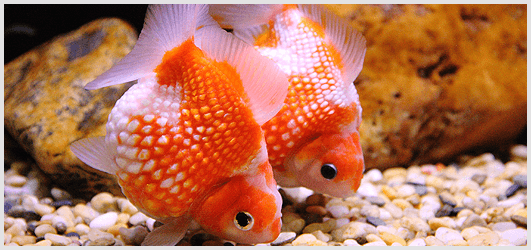
The Far East is the undisputed origin of the goldfish. Because of documentation that spans hundreds of years of Chinese rule, it’s known that goldfish were raised for ornamental purposes. Moreover, there are different stories about the goldfish.
Some say goldfish were protected by the authorities because they were considered to be holy. The significant difference between edible carp and the goldfish is a simple genetic mutation, which worked out well for the goldfish, but not for the carp.
Goldfish (Carassius auratus) are a freshwater fish that belong to the carp family. In nature, the goldfish’s color is green to olive/gray. The lifespan of a goldfish living in the wild would be several years. During these years, he could grow to a weight of about 11 pounds, or five kilograms.
As part of mankind’s interest in goldfish, these fish have experienced multiple genetic crossbreeding over the centuries.
Out of this crossbreeding has developed the wide variety and shapes of goldfish available on the market today.
Originating from the silver scaled Crucian carp and belonging to the species Carassius auratus auratus, goldfish have been a favorite pet since the Song era in ancient China. It was during the Tang dynasty that fish ponds were popularized among the Chinese communities, and taking care of these pets began to flourish.
There are numerous ways that people took care of their pets, from fish bowls to their own fish ponds. Goldfish, though, die easily if not properly cared for, so utmost care and responsibility must be observed when handling these kinds of pets. In addition, Chinese people believe that goldfish bring them prosperity and wellbeing, so owning goldfish is a must for most Chinese families. In China, taking care of goldfish is no joke, because improper care of goldfish is viewed as throwing something of high value into the ocean when it is already in the grasp of one’s hand.
Through breeding, the Chinese were able to achieve the gold or more yellowish color of the carp. However, the new colored goldfish were not made available to everyone. During those times, yellow represented the imperial family. It was against the law for citizens who did not belong to the imperial family to own something perceived as belonging only to the higher classes. Hence, ordinary people were not allowed to own the carp. Because of this ruling, other Chinese goldfish breeders eventually created orange colored goldfish for everyone to enjoy. They created more orange colored than the yellow colored carp, so that more Chinese would be able to take care of goldfish.
After the goldfish breeding began in China, the hobby reached Japan, which paved the way for more goldfish breeding. From the most popular to the most unpopular breeds, Japan has made remarkable contributions to the carp species. Although the Ryukin variety is the most popular among the Japanese breeds, it is not as popular in other countries, compared to other goldfish breeds.
Of course, the United States didn’t want to be left behind, so breeders in the U.S. came up with their own version of the carp. Their participation in breeding societies gave birth to the comet goldfish, the peak of all goldfish breeding.
Even today, various beliefs about the existence of the goldfish still flourish among certain cultures. Several Chinese restaurants set up an aquarium with goldfish to shower prosperity and wellbeing on their business. Southern European men give goldfish as gifts to their spouses on their first anniversary, which is also a symbol of prosperity, with the hope of more prosperity to come to their family in the future.